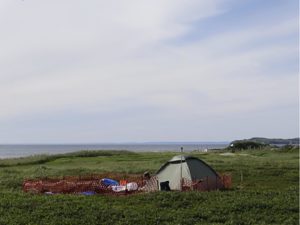
PROCEEDINGS OF THE NATIONAL ACADEMY OF SCIENCES—Researchers report* the discovery of a previously unknown cultural horizon in a peat bog near L’Anse aux Meadows in Newfoundland, a site of Norse settlement in the New World. Paul Ledger and colleagues excavated in a peat bog approximately 30 meters east of the settlement, aiming to recover samples for a paleoenvironmental reconstruction of Norse environmental impacts. In the process, the authors discovered a previously unknown archaeological horizon at a depth of around 40 centimeters that contained trampled surfaces, charcoal, and wood working debris. The horizon revealed no culturally diagnostic artifacts. However, radiocarbon dating estimated that the layer was deposited sometime between the late 12th century and 13th century, postdating evidence for Norse occupation. Laboratory analyses recovered insect remains, including early records for beetle species assumed to be post-Columbian additions to the Canadian fauna. According to the authors, the physical character and biological content of the horizon recalls Norse deposits from the North Atlantic region; however, based on the current state of knowledge, the radiocarbon dates point to the layer resulting from indigenous activities.
__________________________

The researchers working at L’Anse aux Meadows, August 2018. Linus Girdland-Flink
__________________________
Article Source: PNAS news release
*”New horizons at L’Anse aux Meadows,” by Paul M. Ledger, Linus Girdland Flink, and Véronique Forbes.




